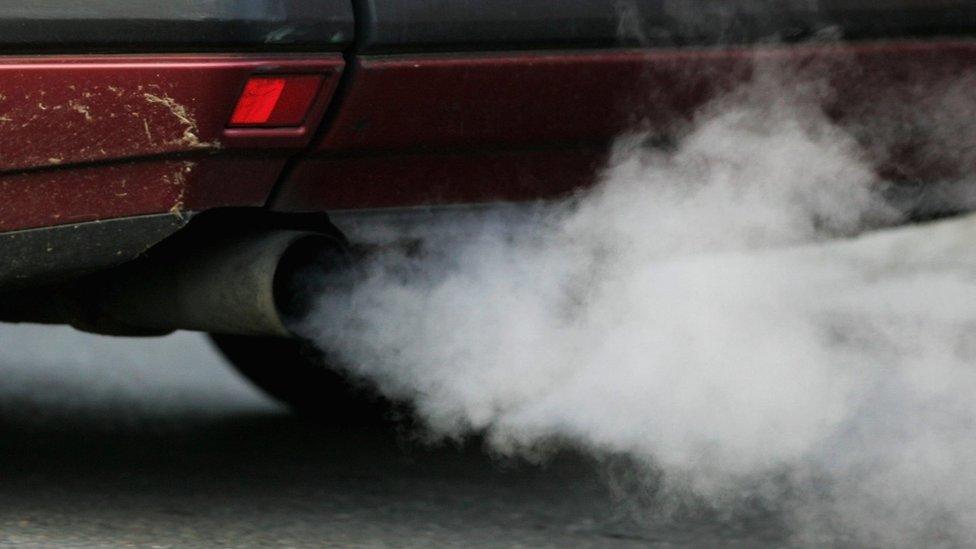Speed limits cut pollution at Welsh traffic hotspots
- Published
- comments

Average speed cameras are enforcing speed limits at most of the sites
Lower speed limits introduced to reduce emissions at traffic hotpots has cut nitrogen dioxide gas pollution, a report says.
The 50mph restrictions were introduced on the M4 motorway at Port Talbot and at Newport, as well as three other locations in Wales.
Transport Minister Ken Skates said he was "encouraged" by the latest results.
The changes were brought in a year ago to help the Welsh Government meet rules on air quality.
Speed cameras are also in place on the A470 at Upper Boat near Pontypridd, the A483 in Wrexham and A494 in Deeside.
The speed limits have been under review by the Welsh Government, external as part of the monitoring of air quality in those areas affected, and will remain in place until nitrogen dioxide levels fall below legal limits.
The High Court had previously ordered ministers to act after they failed to meet EU targets on air pollution.
"It is vital we continue to reduce emissions in order to save people from the risk of developing potentially serious health conditions," said Mr Skates, following the publication of the Welsh Government report.
"I would hope most motorists would agree that helping to save people from illness or even death is more important than saving a minute or so on their journey."

Ken Skates has been speaking to school pupils at St Etholwold's Primary School in Shotton about the issue of air quality
Joseph Carter, the Chair of Healthy Air Cymru, told BBC Radio Wales: "It's a growing public health concern and a big issue which needs taking seriously.
"Just because these are the only areas that have been picked up, doesn't mean these are the only areas that aren't safe.
"We've seen that reducing speed on vehicles seems to work on reducing emissions. It has required speed cameras to make people take it seriously.
"But ultimately, this will only go so far."
Average speed cameras were installed at four of the locations in August to enforce the 50mph limits, and became operational last month.
The Newport M4 stretch is already covered by spot cameras that match the variable limits imposed at peak times.
Environment Minister Lesley Griffiths added: "It is vital urgent reductions in nitrogen dioxide emissions are achieved to meet legislative requirements and to support our ambitions for a healthier and more globally responsible Wales."
A further report focusing on air quality and pollution on the speed-restricted routes will be published in March 2020.


An AA spokesman said it was "widely known" speed limits cut pollution "because you're using less fuel".
He said drivers better understood the use of speed cameras in relation to pollution when they reacted according to the air quality.
"Where the air pollution situation is perfectly good, for example in the middle of the night, and yet the speed limit is restricted, we think the speed limit should reflect the live air quality situation," the spokesman said.
He said using cameras to police air quality was "a different take" on their use but accepted they were "part of an arsenal for road policing".
"There are signs painted yellow and the speed limit is visible, therefore drivers should and must adhere to them."
- Published25 September 2019

- Published20 June 2019

- Published27 March 2019

- Published24 April 2018

- Published21 February 2018
